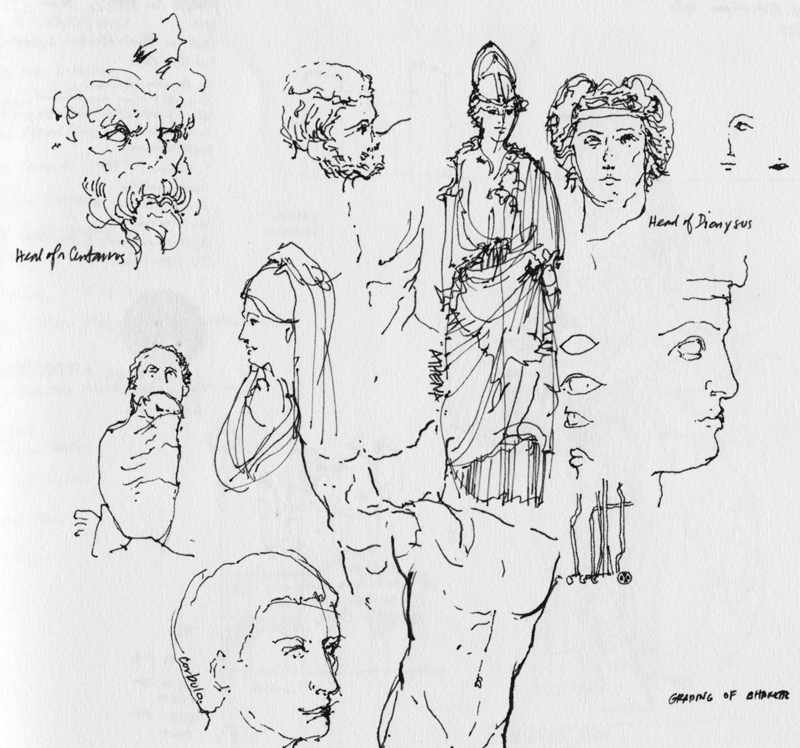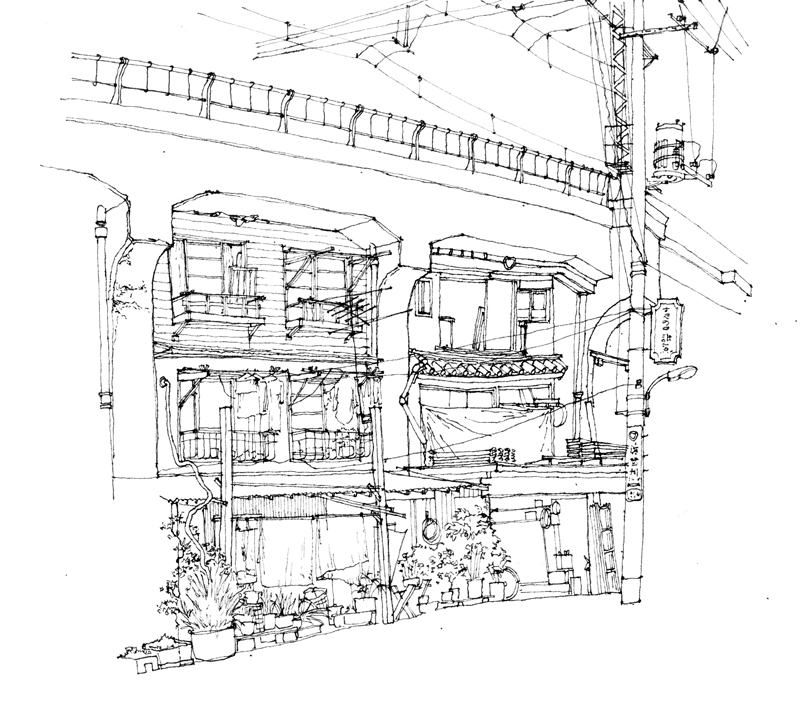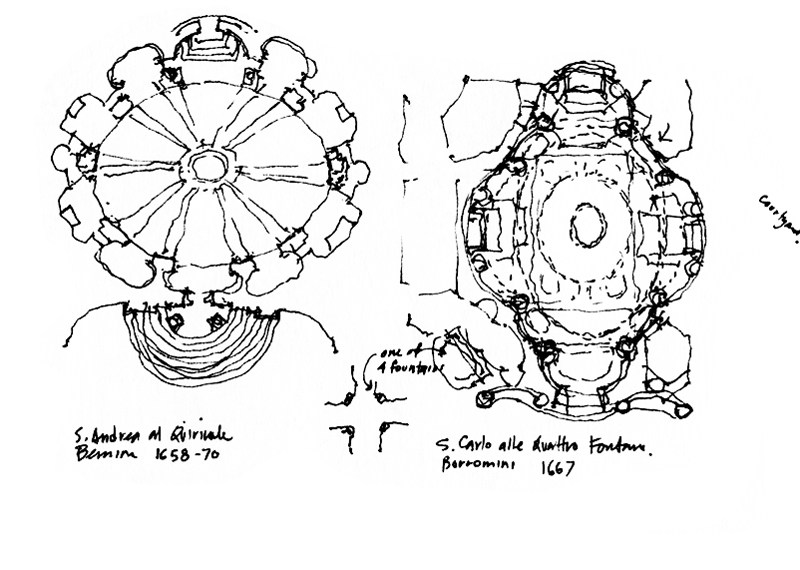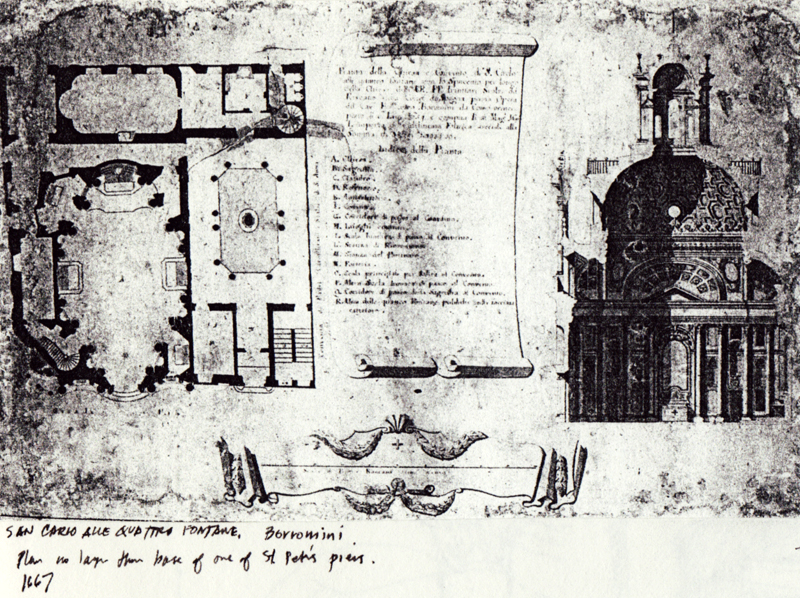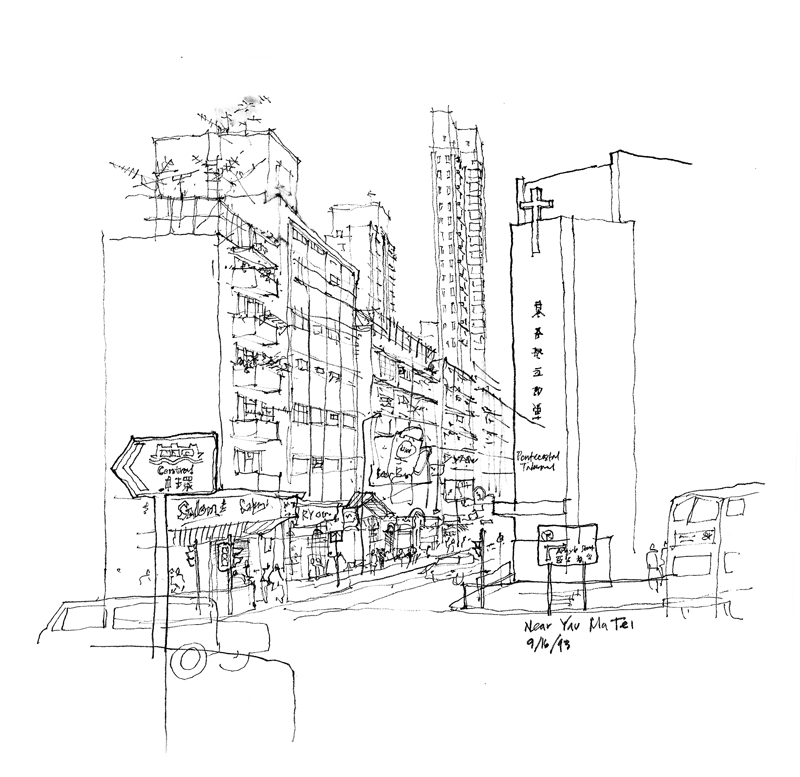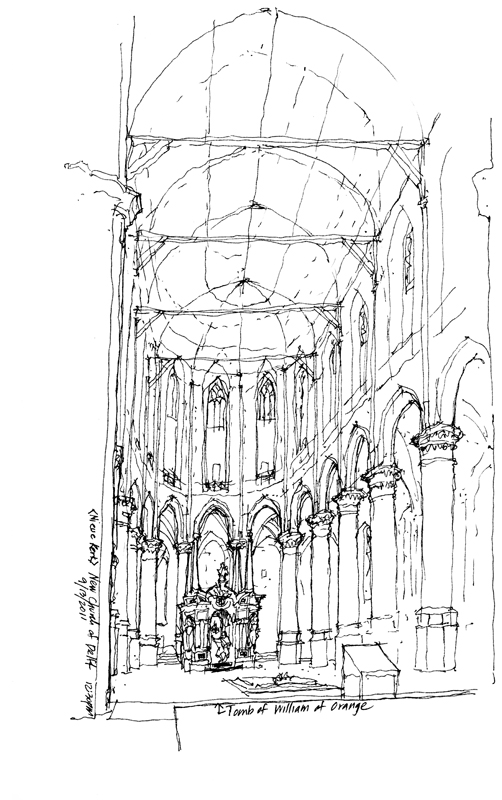We draw by dragging, pulling, or in some cases, pushing a pen, pencil, or brush across a receptive surface to make marks that represent what we see or envision. This is the magic of drawing, that the ink, graphite, or paint marks we create can call to mind what we have seen and experienced, or what we foresee as an imagined future.
Some drawings simply lay on the surface on which they are created and tend to be seen and appreciated as 2-dimensional graphics or paintings, viewed through a frame. Due to my training as an architect, however, my personal challenge has always been to overcome the flatness of the drawing surface and create the illusion of space and depth on the 2-dimensional plane.
There are a host of visual depth cues, such as overlapping shapes and size differentiation, that I spoke of in a post from July of last year. Even when drawing 2-dimensional plans, sections, or elevations, we can use contrasting line weights, tonal values, or level of detail to imply depth.
Of course, when drawing experiential views on location, we rely heavily on linear perspective to create the illusion of spatial depth. The convergence of parallel lines, along with the associated principles of size and texture perspective are powerful devices that convince that we are seeing through the paper surface into the depth of a drawing.

